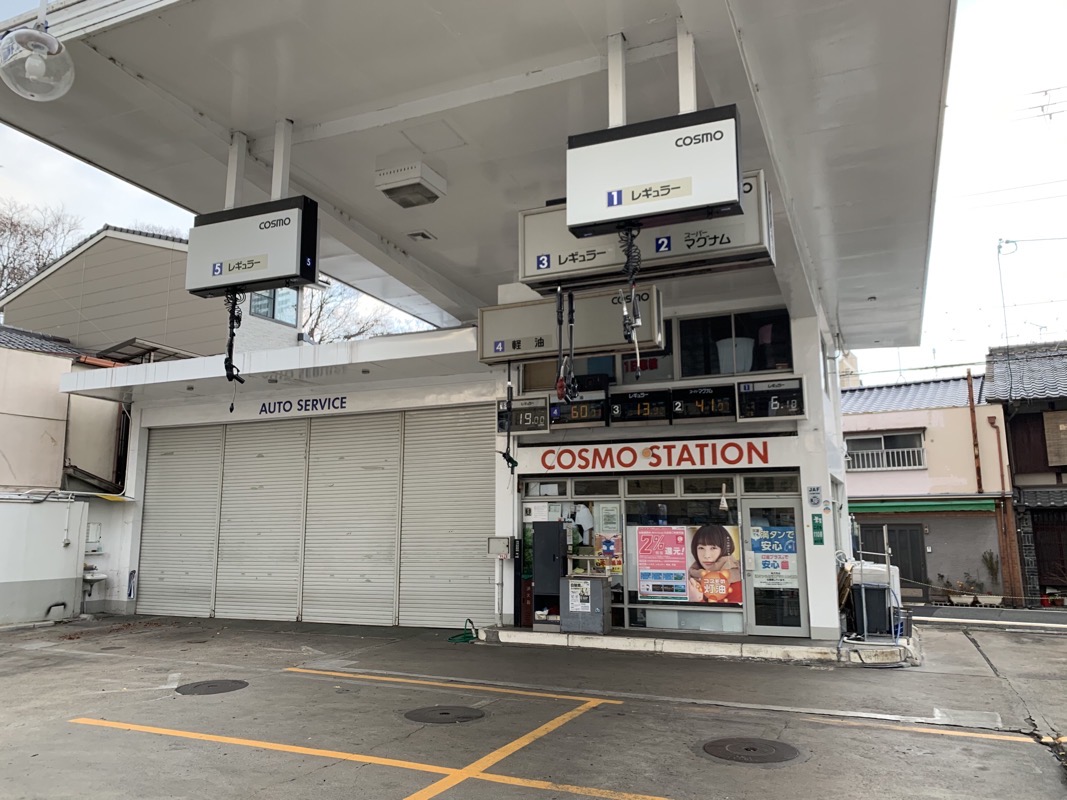So it’s Friday the third, our second last full day in Kyoto and our first goal is to see Fushimi Inari Taisha and the Senbon Torii (The Thousand Torii Gates). A quick walk down the hill to the Kiyomizu-Gojo station of the Keihan line and we’re on our way to Fushimi-Inari station, the start of the Kyoto Trail. We’d seen these markers along the way to Shogunzaka, and a few times since, but this was #1!
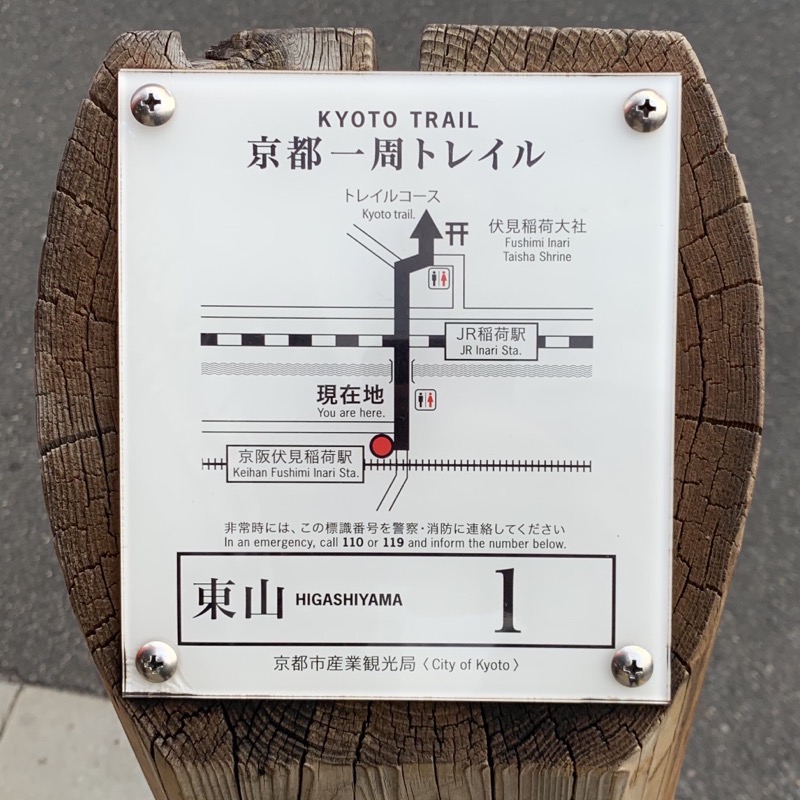
Also, I finally read up about it tonight. It seems like quite the adventure through history.
As soon as we’re off the train, it’s clear that everyone else had the same idea. I can’t possibly estimate the number of people who were all trying to climb to various points of Mount Inari, but let’s just say it was a lot.
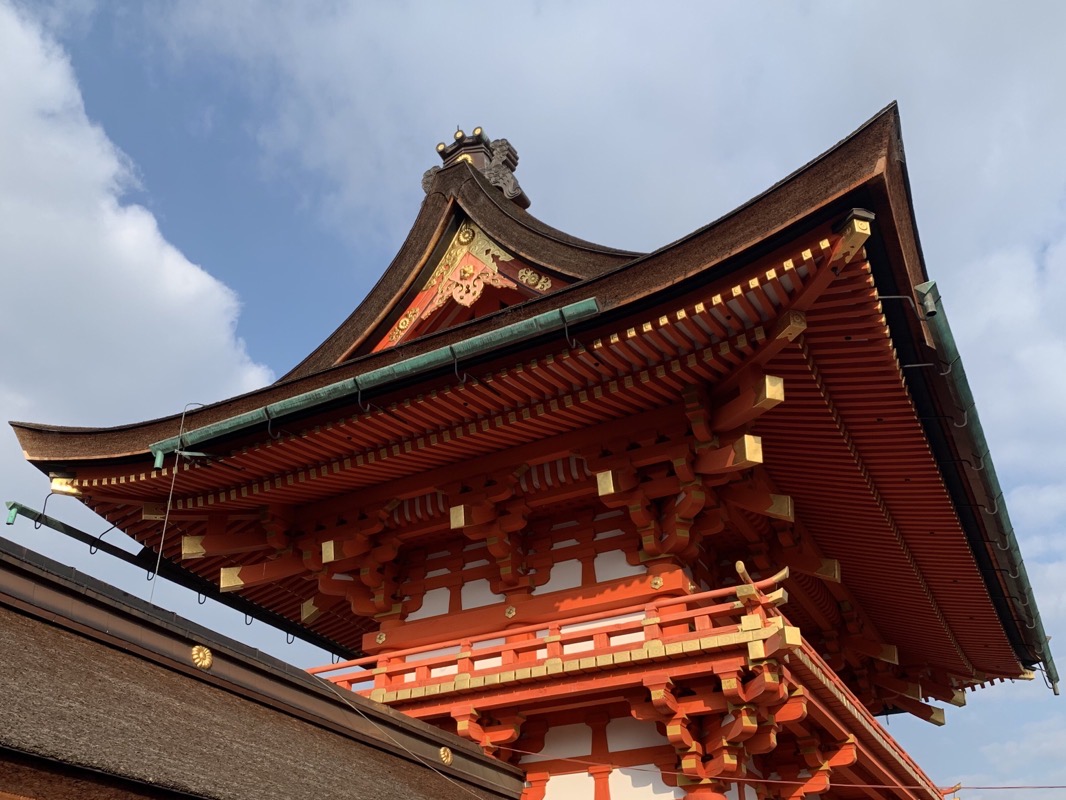
Today I learned that Inari is the Shinto god for rice. Inari’s messengers are the Kitsune (foxes), which explains all the statues.
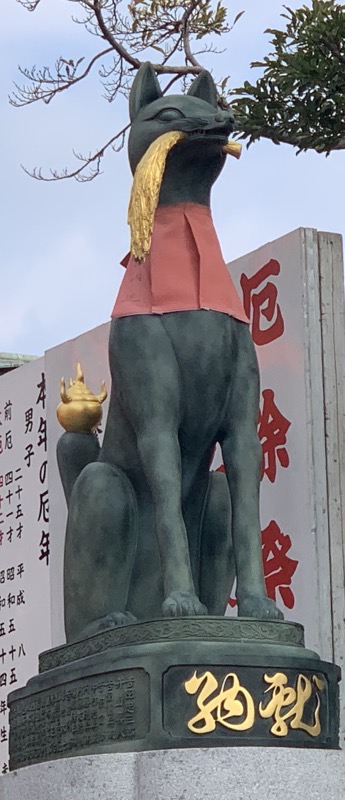
The shrine predates even the capital’s move to Kyoto’s in 794, being started in 711, and celebrated its 1300th anniversary in 2011.
The map is a little vague. So’s the one on the wall. We worked it out though.
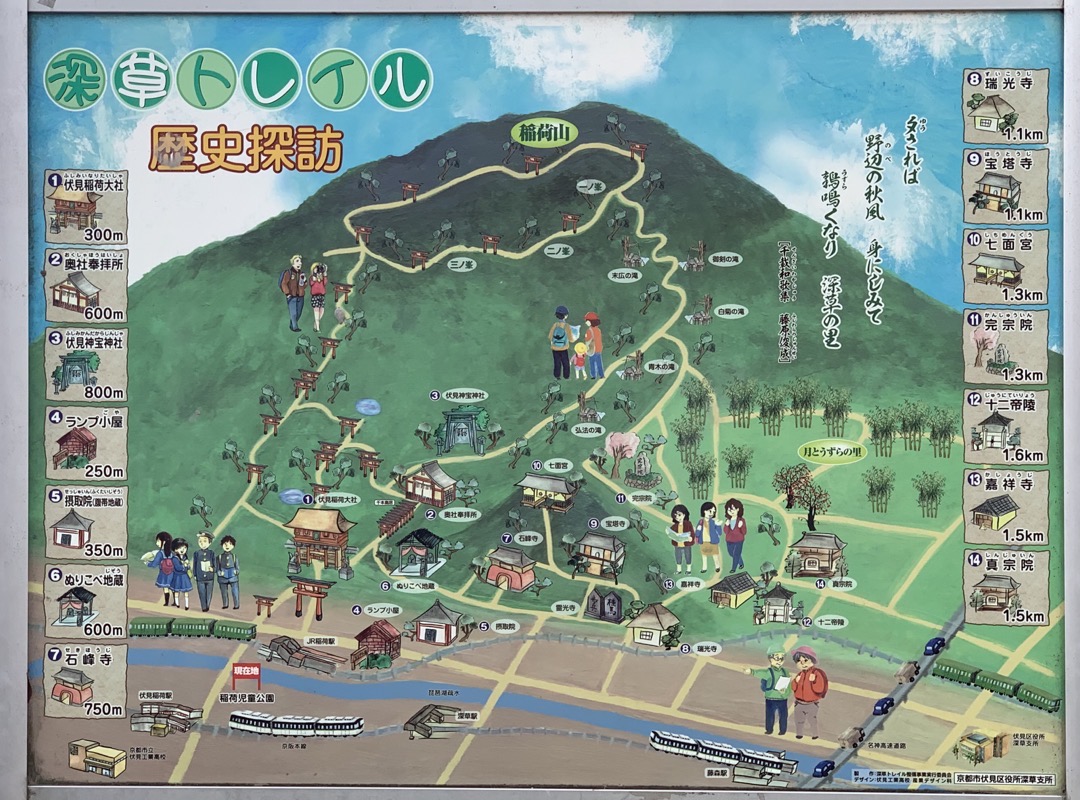
As I mentioned above, the crowds were spectacular. Coming from a town the same size as Kyoto, but a country with a population barely bigger than that, this many people in the one place is pretty spectacular.
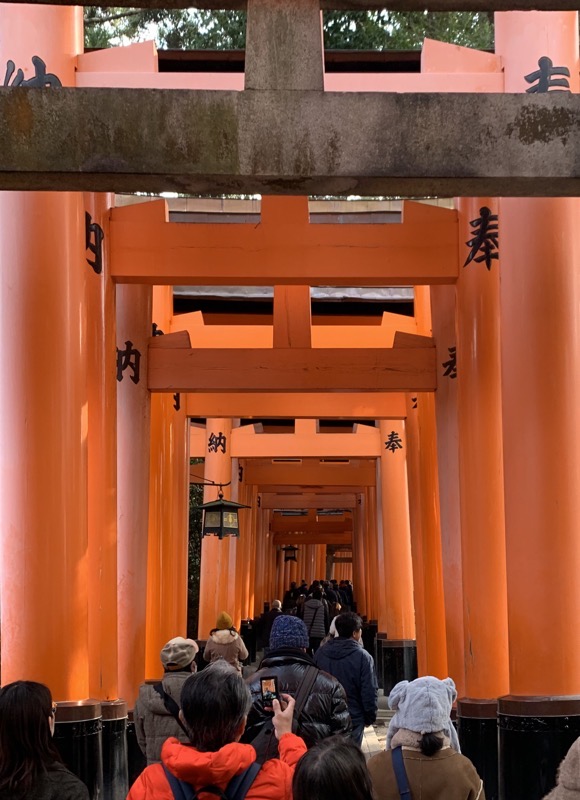
The kind of thing normally reserved for major music acts or the Ekka, but in tiny concentrations compared to the just… phenomenal amount of humans in the one place.
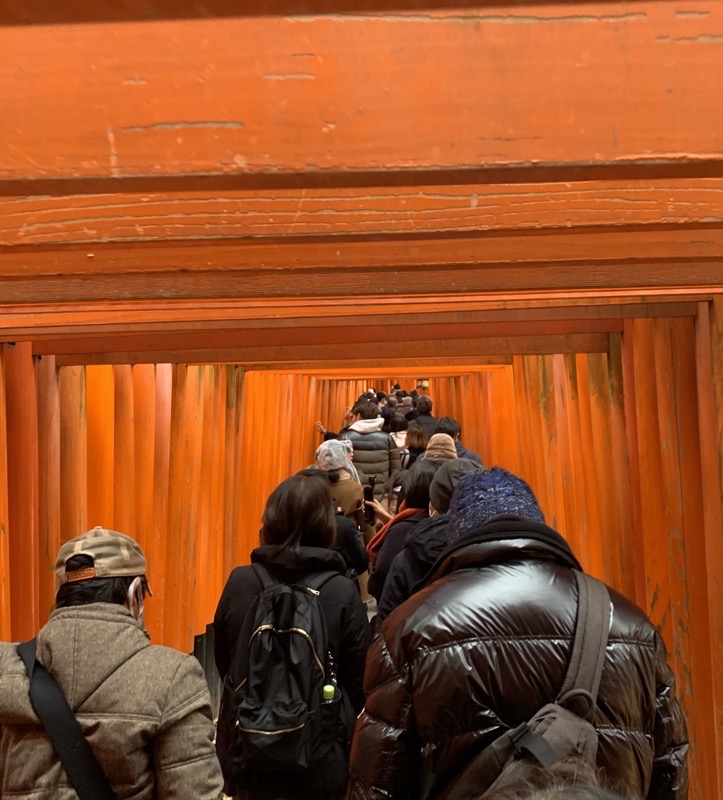
Did I mention it was busy? At this point I started to worry. I’m over two meters tall, and I was having to duck to get under them. If this continued, I’d be having a bad day.
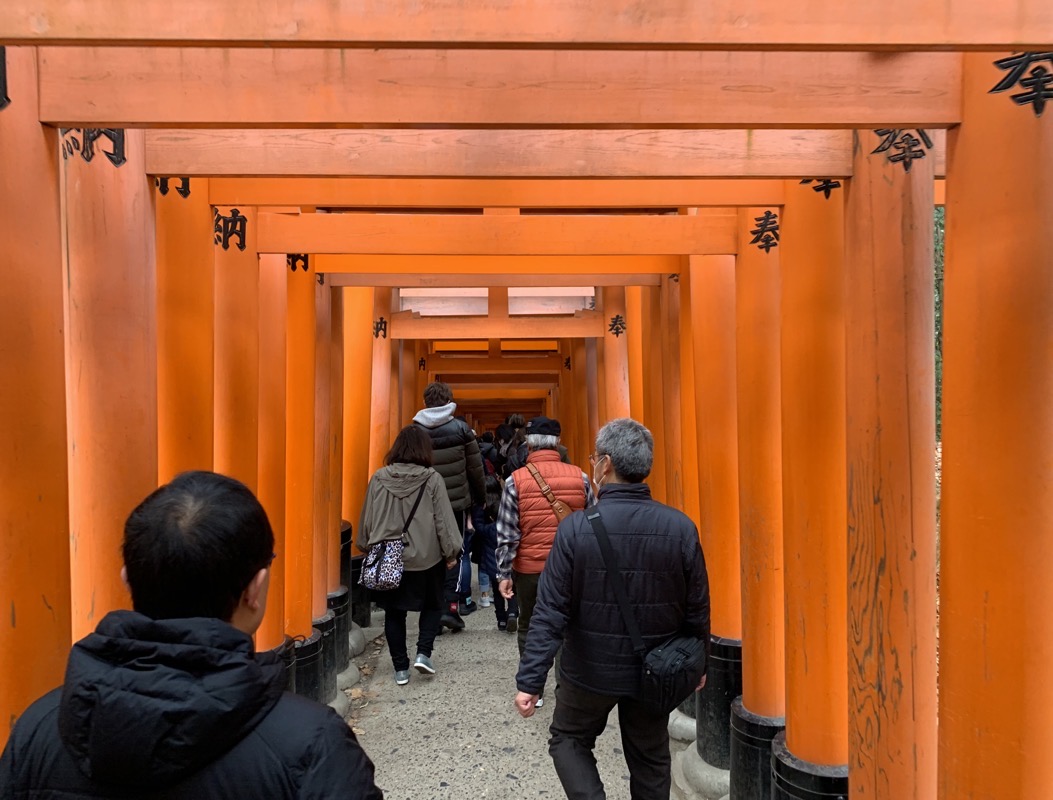
Thankfully, it didn’t. No major crouching required.
On previous days, we’d been warned about aggressive monkeys. Today we were warned about monkeys and boars. Sadly, I suppose due to the crowds, we didn’t see any.
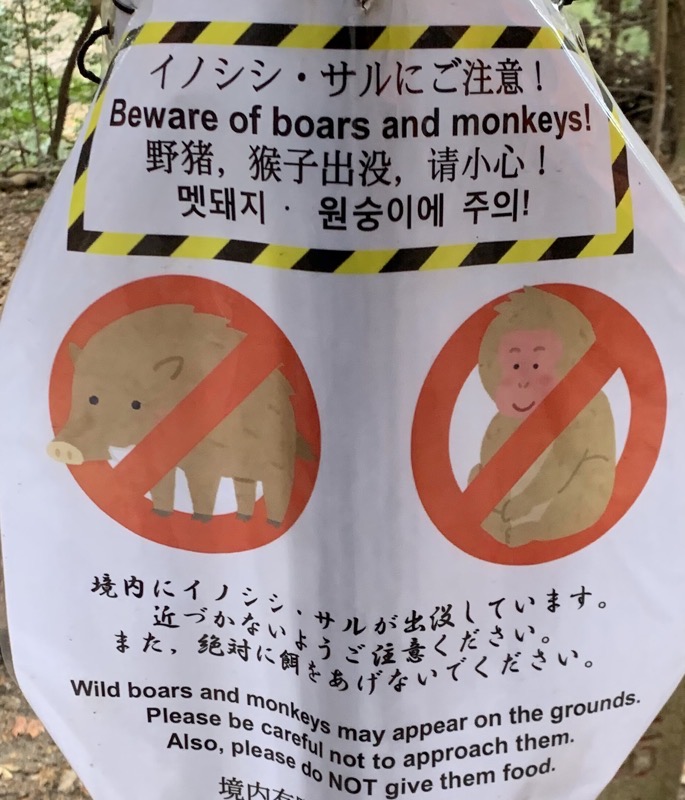
Along the way were many small stops with cafés and shops. Some of them sold small torii which you (or they) would write your name, the date and your wishes upon.
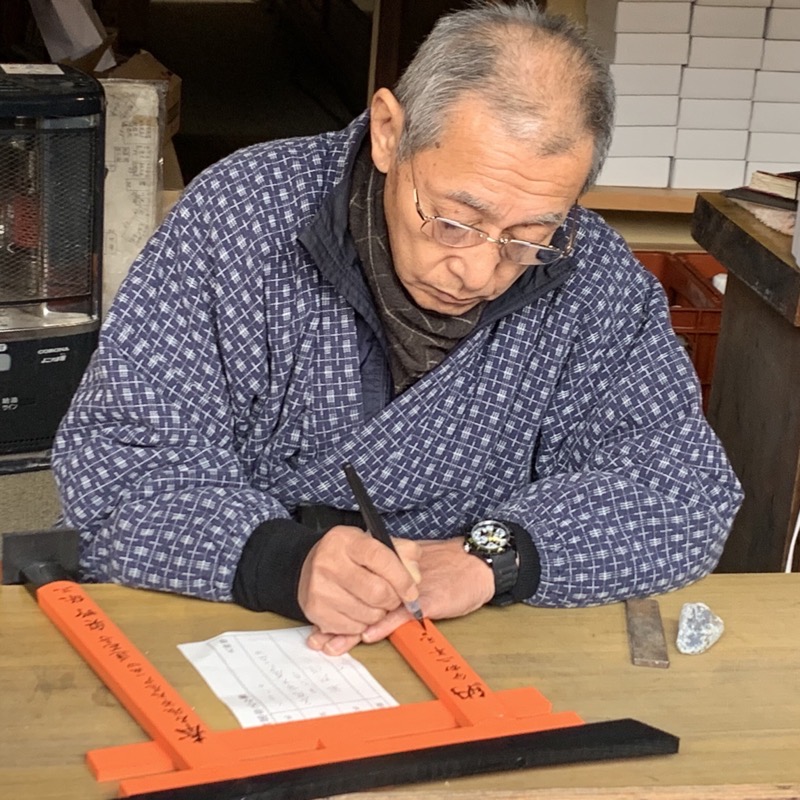
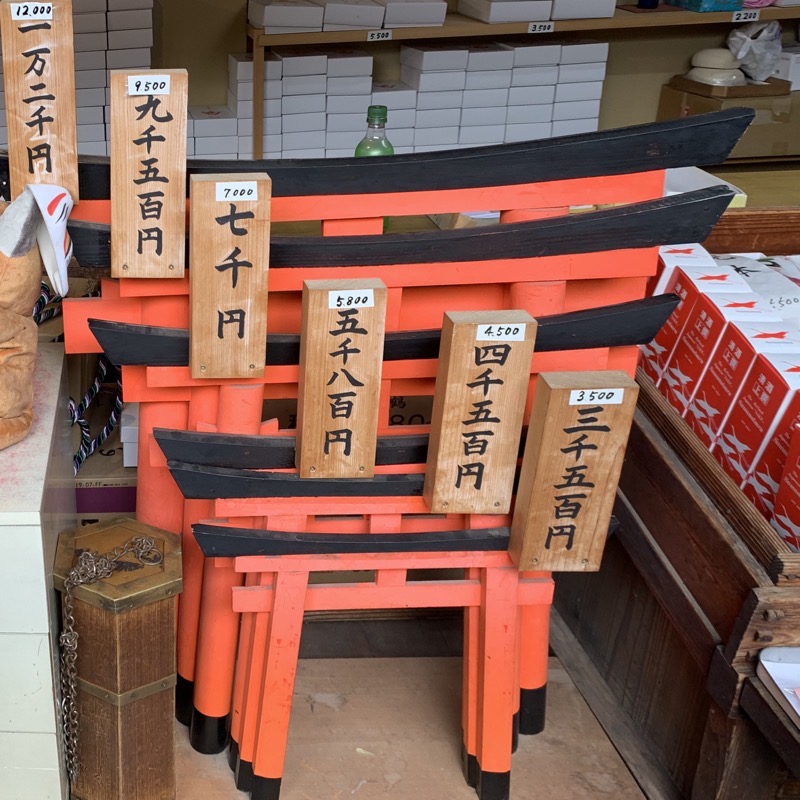
The rest of the gates were purchased too, with one article I found mentioning prices between 400,000 and over 1,200,000.
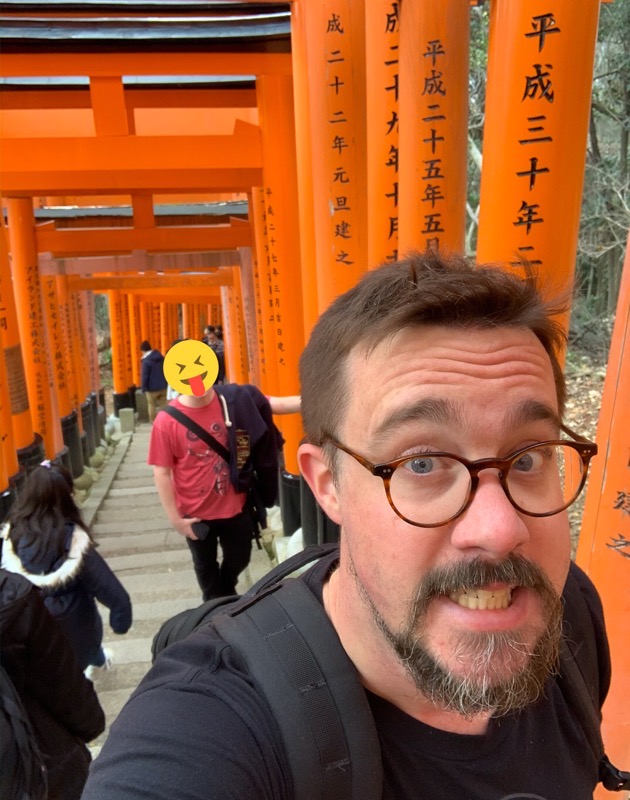
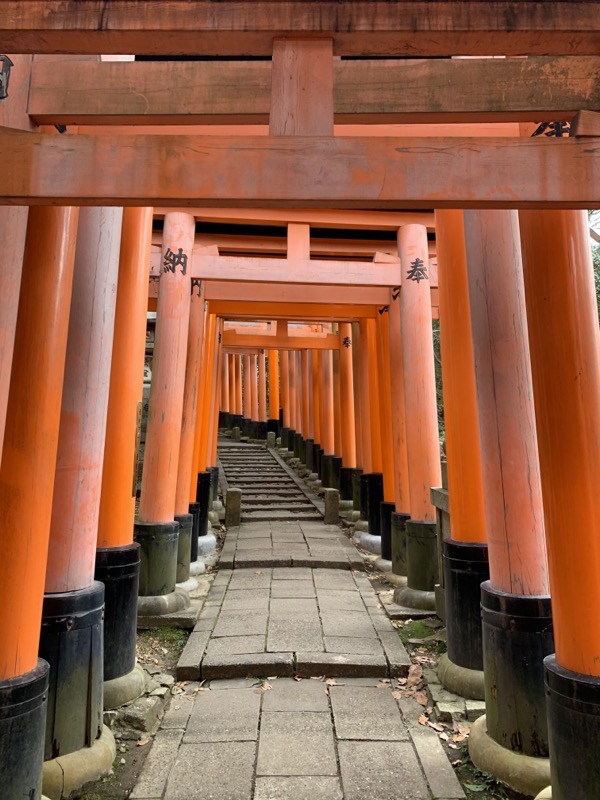
We made our way up to the peak of Mount Inari, seeing many different shrines and things along the way.
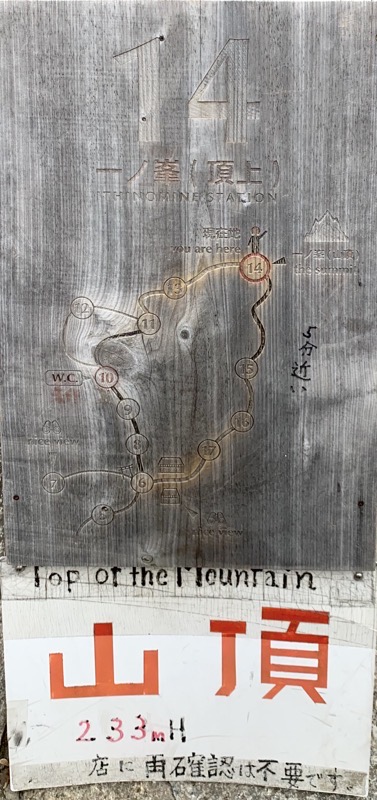
Of course, there were many many many torii.
I spent a lot of effort taking photos when I could, and waiting for just the right moment when people weren’t in the shot. This is about the landscape and the gates, not the tourists.
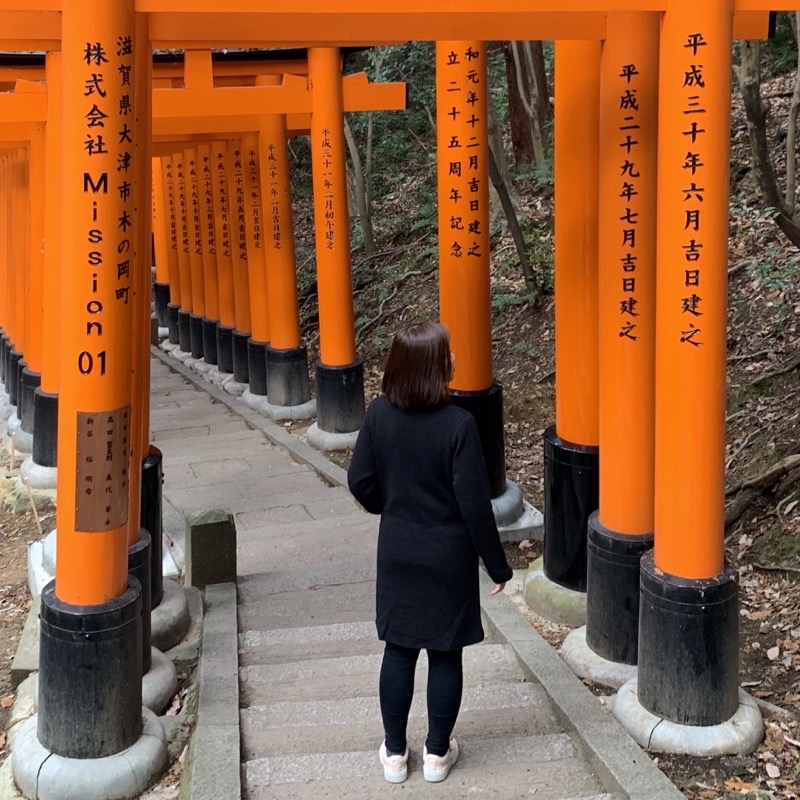
But sometimes, you just had to wait for someone else’s glamour shot.
Mossy Foxes. Kitsune, (Vulpes Vulpes), the messengers of the Shinto god of rice.
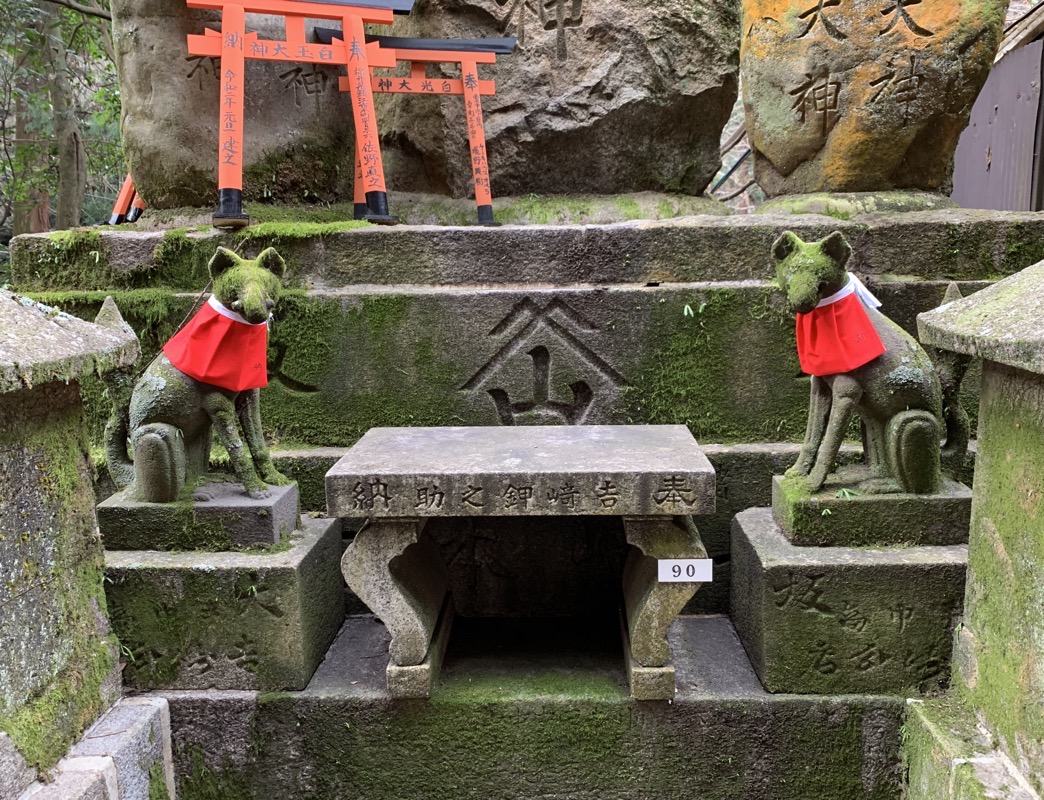
This was pretty funny. I count nine “EXIT THIS WAY” signs in this photo, but I assure you, there were many more than this dotted around the rest stop. That path to the right went to another small shrine and also their prep/living area.
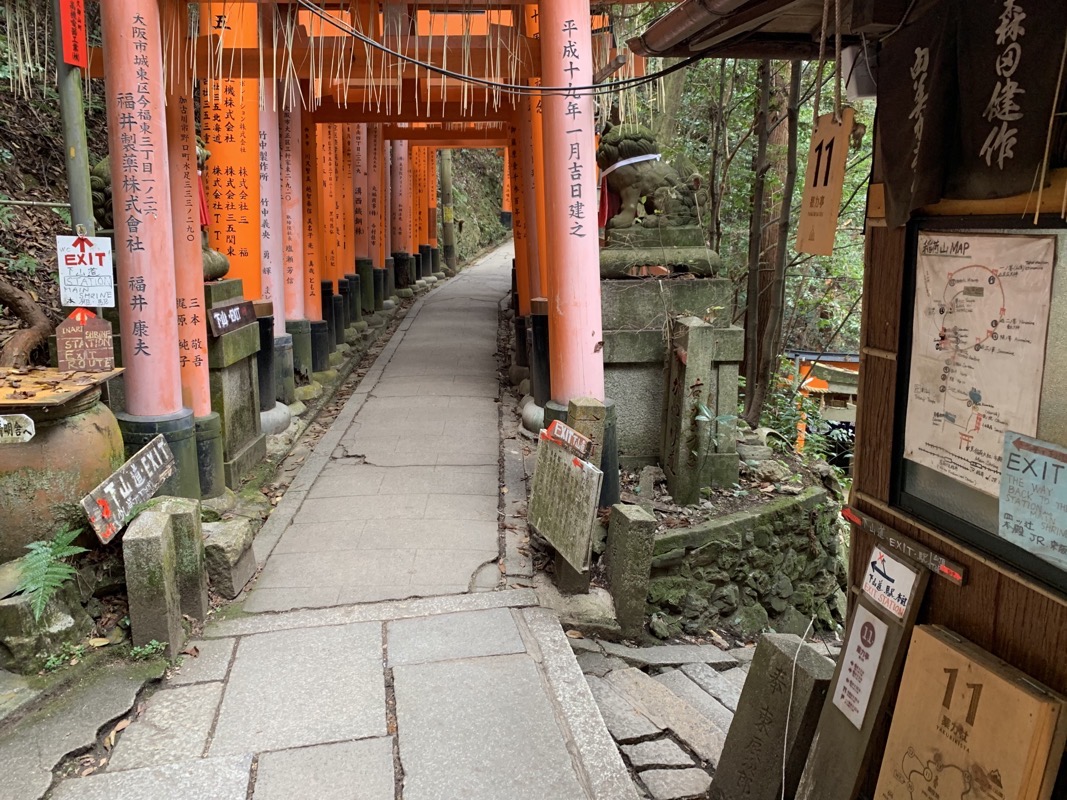
All the gates have the donator’s name and date at the very least inscribed on them. Giving for spirituality has its perks, I guess?
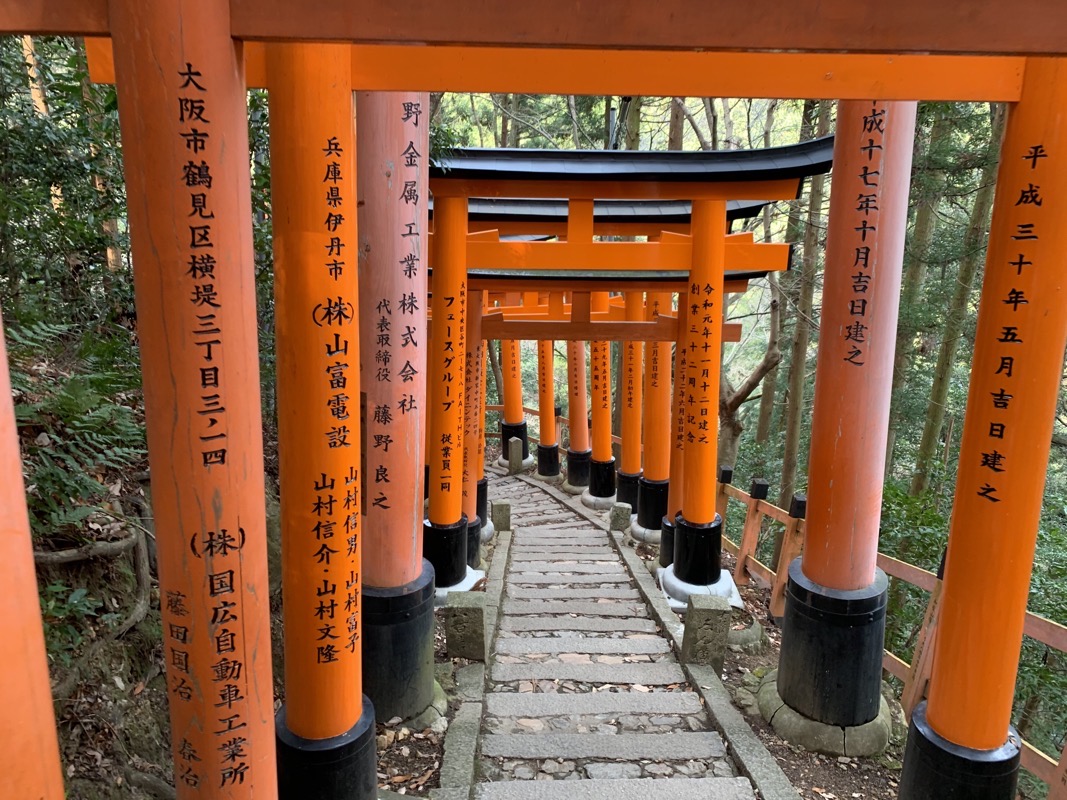
With the trees in the way of the shrines, the lighting got pretty ethereal at times. I can only imagine what it’d look like with deep snow or just after heavy rain.
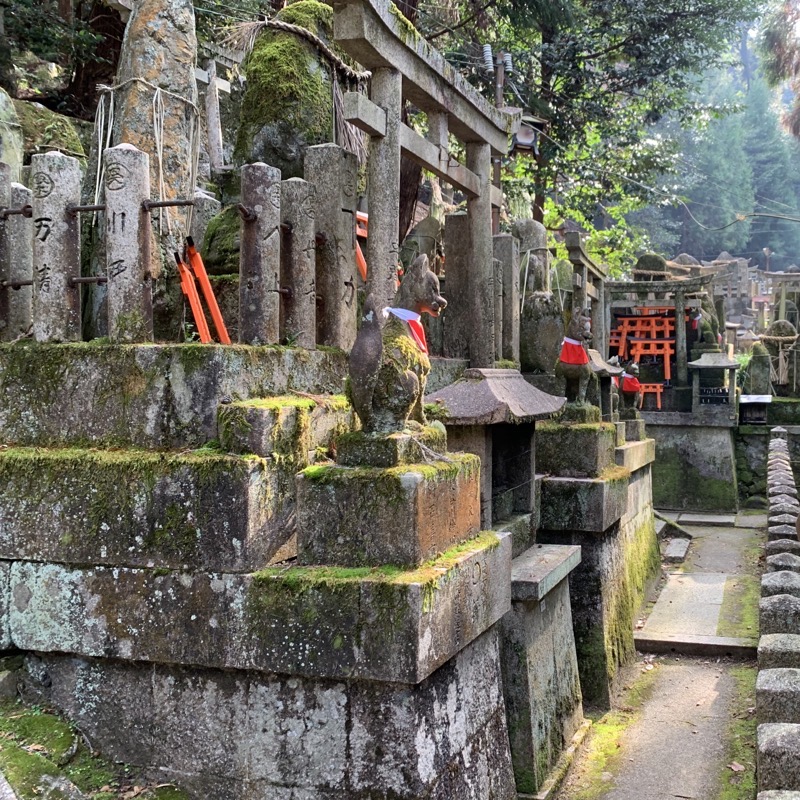
It really was quite a stunning sight.
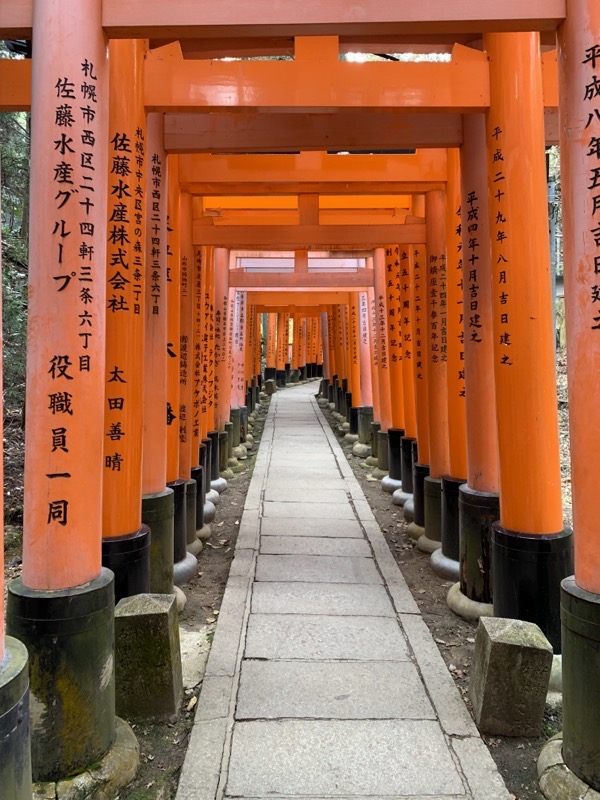
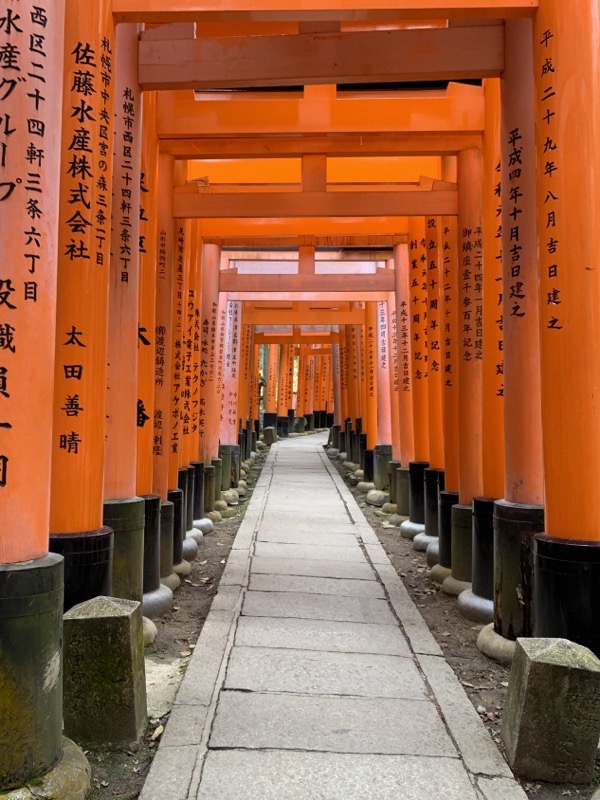
The only thing we “missed” was the “second” set of gates on the southern ascent.
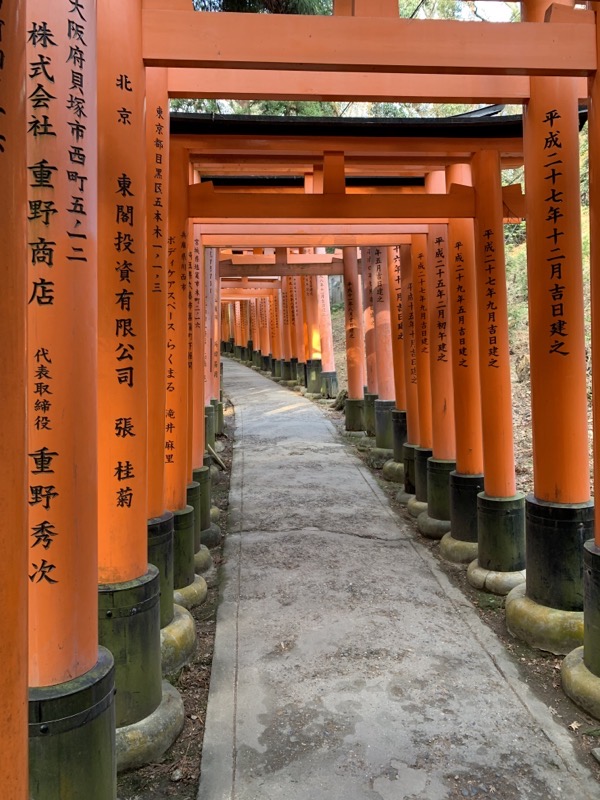
There was a dedicated “up” and “down” path this time of year, and we only went along the “up” side. I don’t think we really missed anything special, returning along the northern descent.
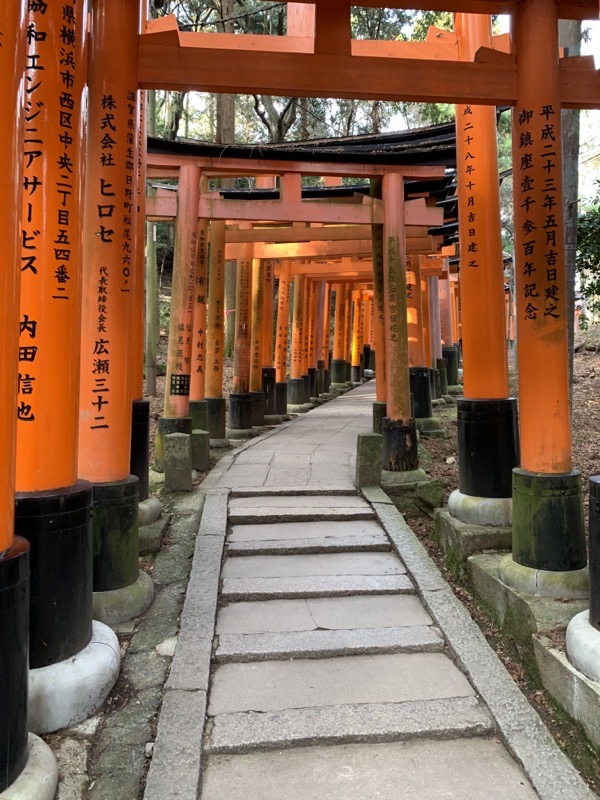
I’ll have to come back one day to spend some time along the route again, taking my time and exploring some of the side routes and just… not having to avoid people taking selfies while everyone else pushes past them.
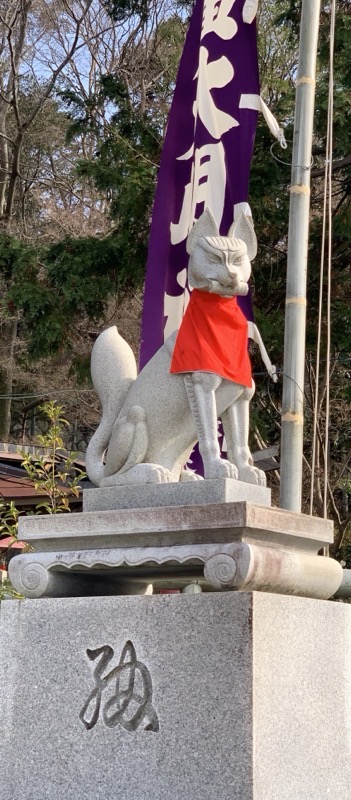
Don’t get me wrong, it was a beautiful place to be… but this many people enjoying it at once made it a little stressful. It’s an ascent to 233 meters above sea level on stairs and having to do it at ¼ speed really takes a toll on one’s knees.
With all the people there at this time of year, the streets to and from the train stations were packed with stalls selling street food and souvenirs. I really wanted to try some of the delicious street food but the crowds were a bit much and I didn’t feel like standing around in it trying to eat…. except for some red bean Taiyaki. Nom. No photos, ate it. Nom.
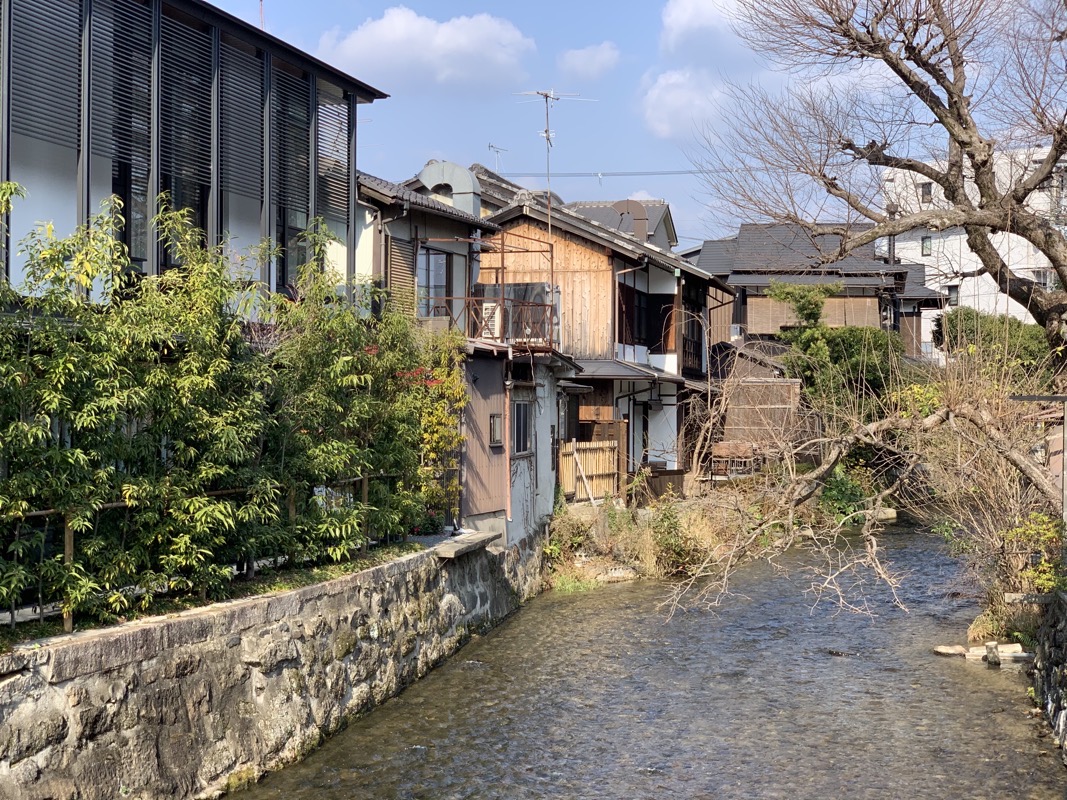
Back on the train and off to the Heian shrine.
This really is a large Torii…
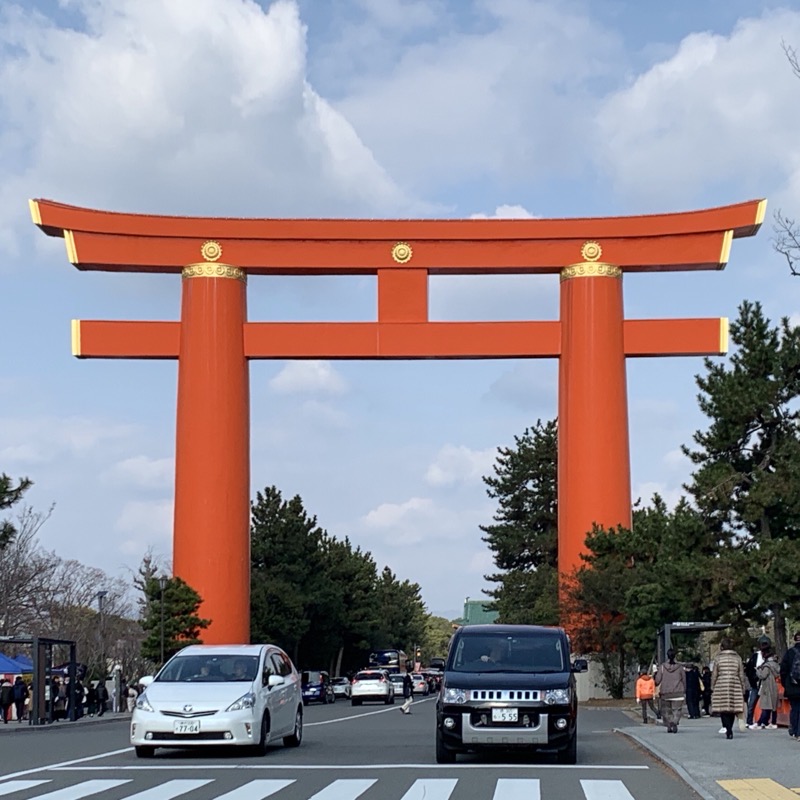
The gate is pretty spectacular too.
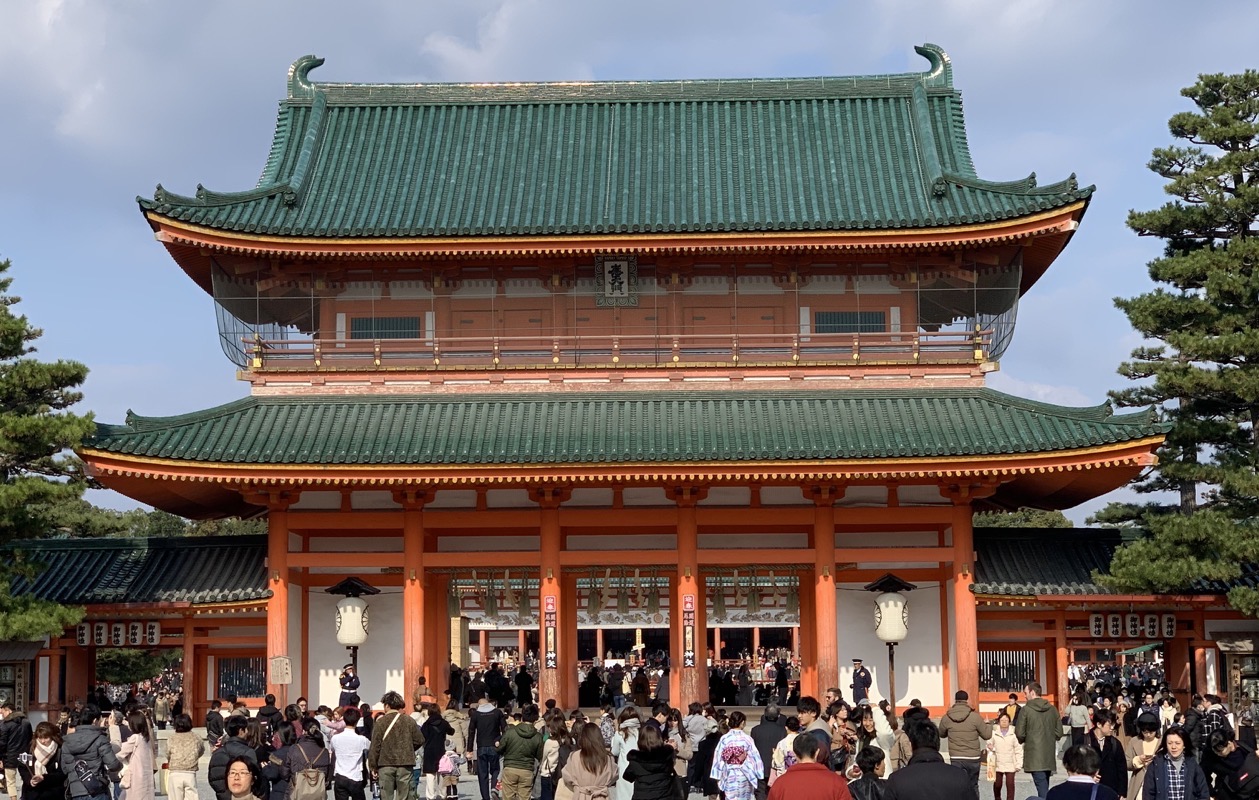
I’m not going to give you a history lesson, go read the Wikipedia article. Ok, it’s a reproduction of the old palace, originally built in 1895 to commemorate the 1100th anniversary of the city, burnt down in 1976 and rebuilt again shortly after.
They really don’t have a great history with fire. But they’re amazing at getting over their shit and just rebuilding it as good or even better than before.
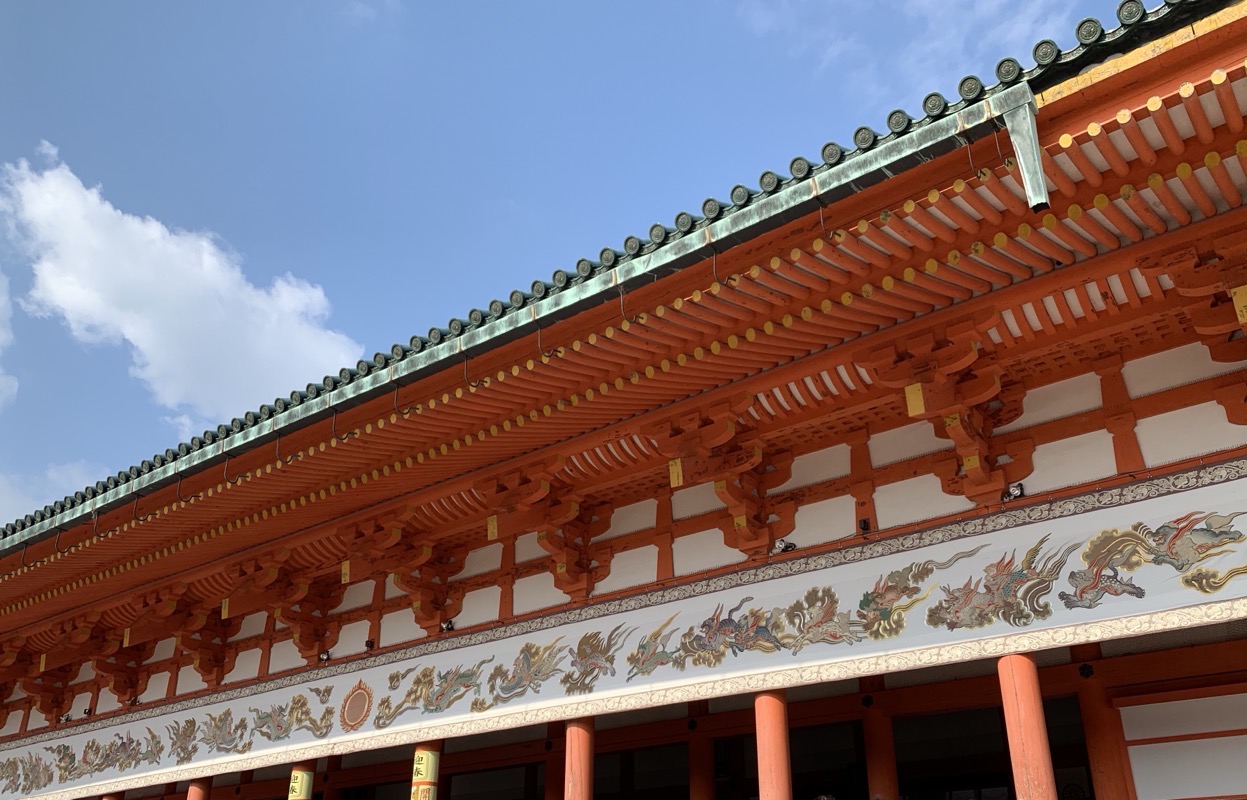
Entropy continues, but we continue…
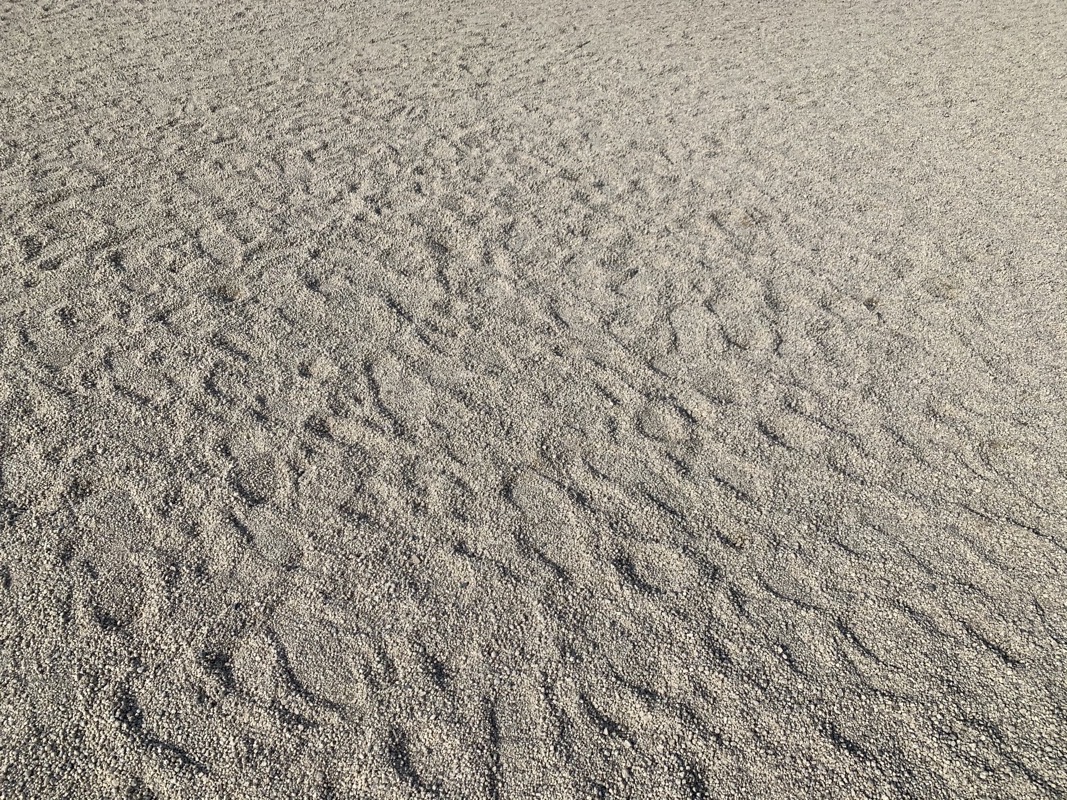
After a fair chunk of searching I still can’t explain the tree in a woven box. There’s a matching Sakura on the other side of the approach to the shrine…
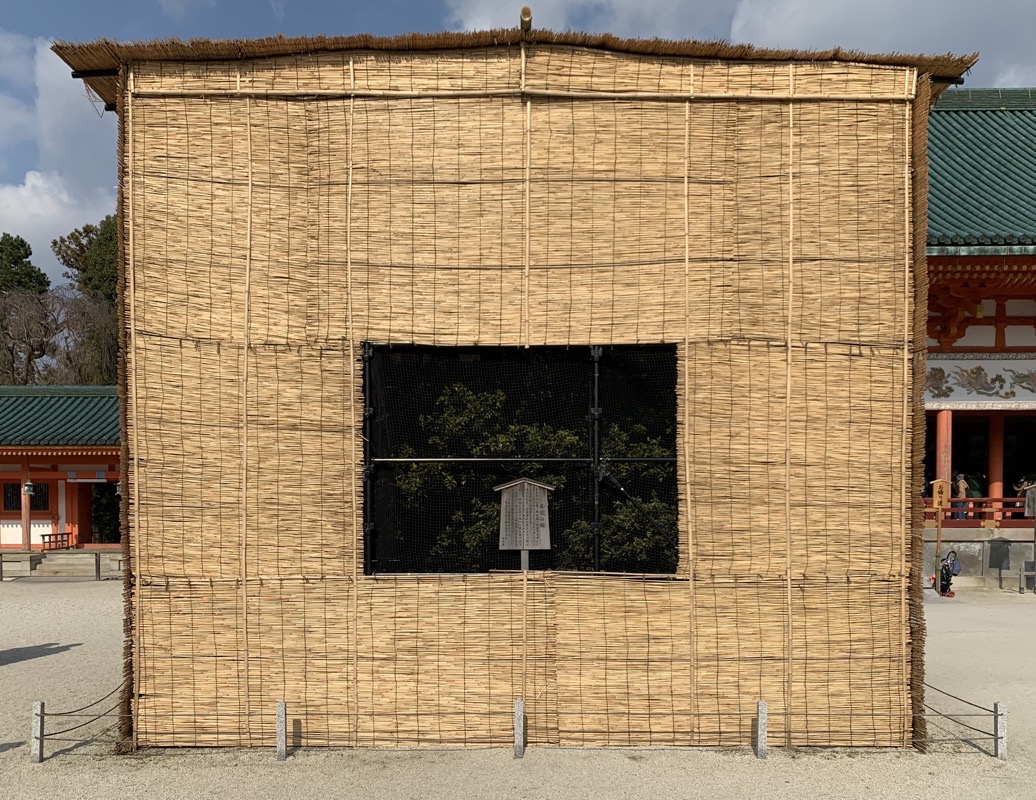
And now it was lunch time. There was a big market set up with many street food stalls, all desperately trying to generate enough food to stuff the visitors with.
I chose Takoyaki. Such wait, many frustrate.
I waited 40 minutes in line for them… at least twice as long as A waited for his “all you can eat” yakisoba. I should have reconsidered the stall I’d chosen after the visibly confuzzled guy got a random helper issued to him, at which point it got slower. After the first half an hour of waiting I was equal parts hungry, frustrated and cold, and I’d waited, so I was going to get my occypussballs.
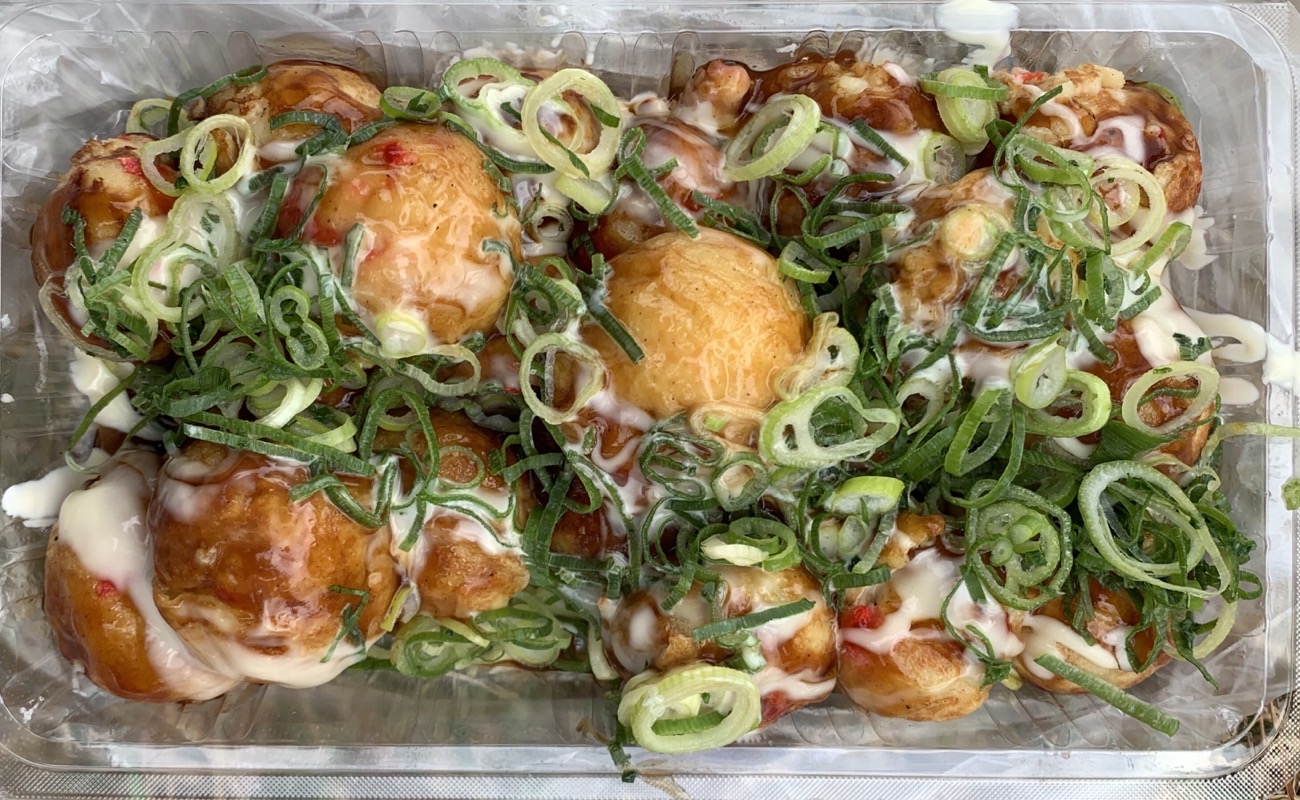
They were pretty good. Or I was starving. I don’t care. 1500¥ for 20. Nom.
While reading up on the history and writing this post, I was reminded of the BABYMETAL song “Megitsune” - about a Vixen - and ended up terrorising A by blasting their hits through my headphones all night.
Worth it. Such a great band. I want to see them one day, but I’m sure I’ll have to travel to do it ^_^
Next, to Ginkaku-Ji, the silver Pavilion. Built to emulate his grandfather’s Golden Pavilion, this was the retirement villa of Ashikaga Yosimasa, 8th Shogun of the Ashikaga Shogunate during the Muromachi period.
“Ginshadan” the sea of silver sand.
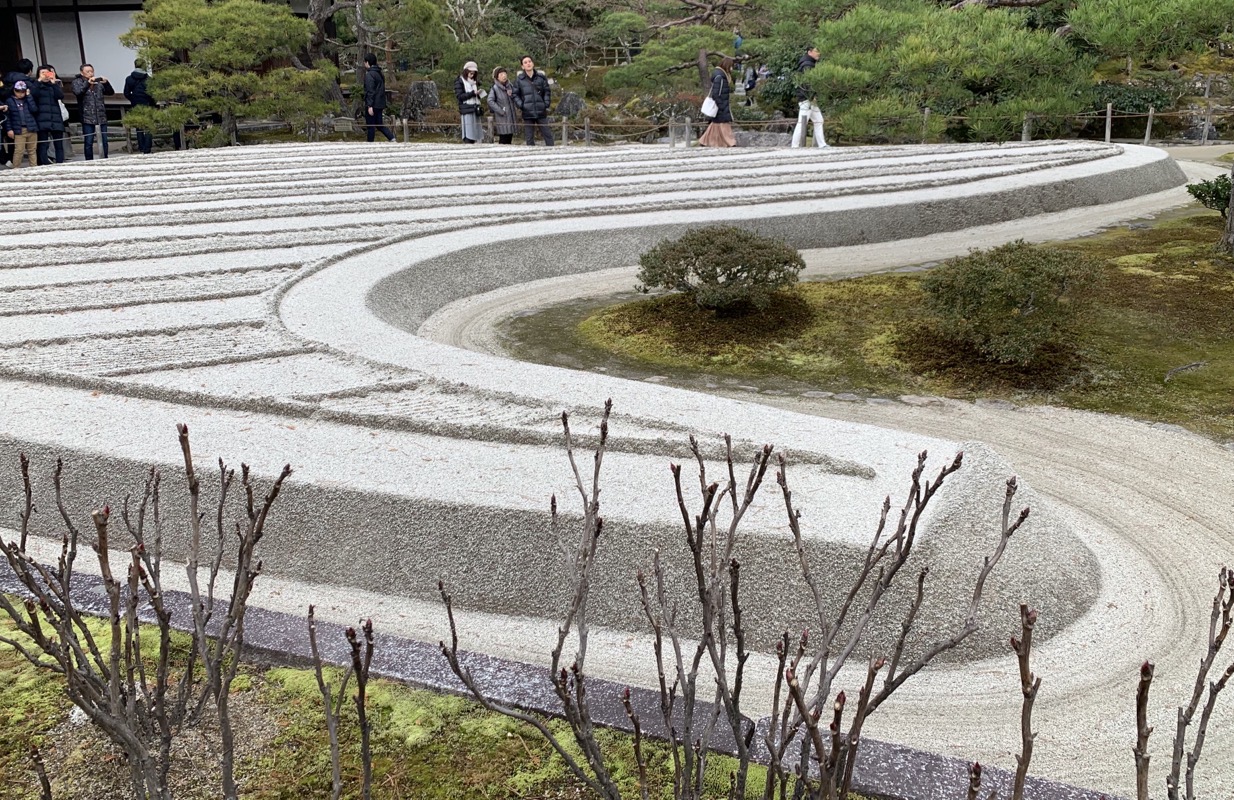
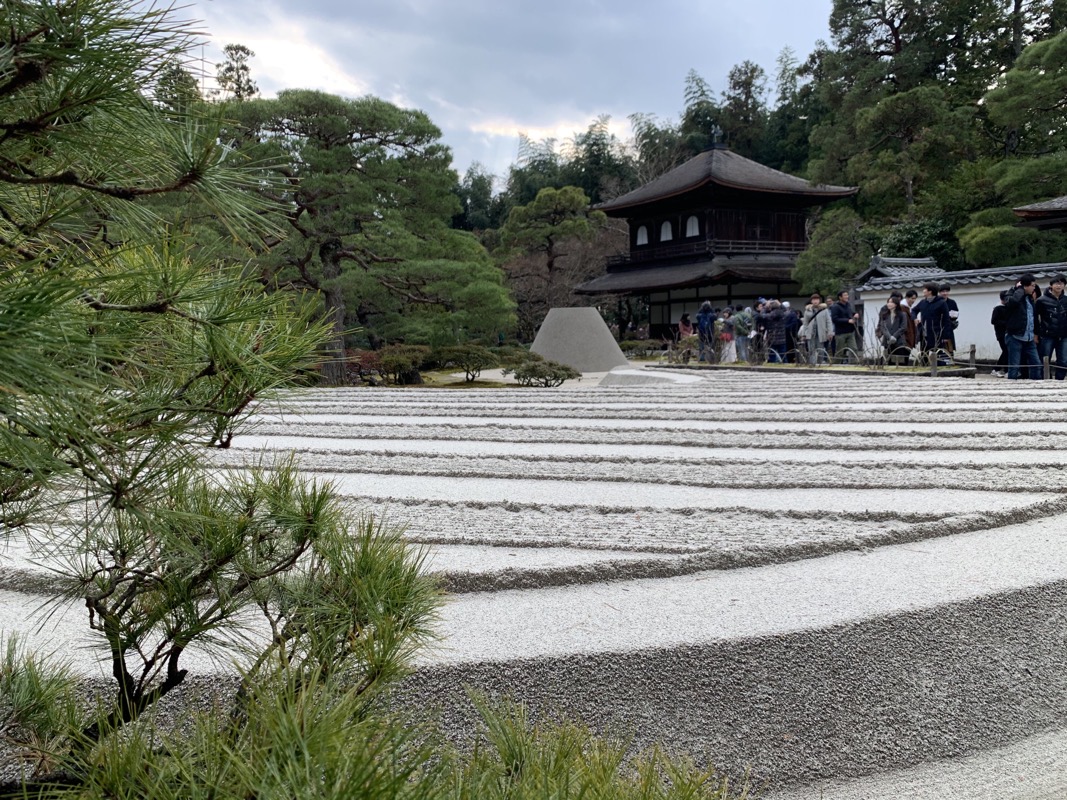
Kogetsudai, the carefully formed pile of sand which is said to symbolize Mount Fuji is an essential element in the garden.
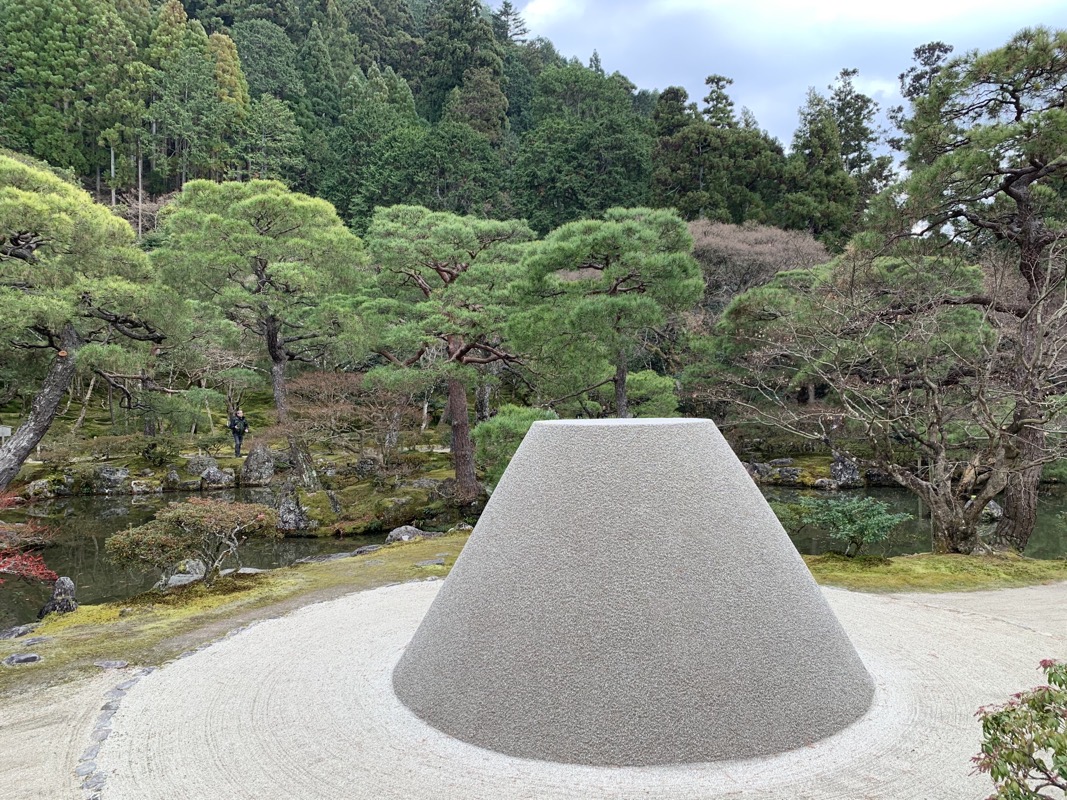
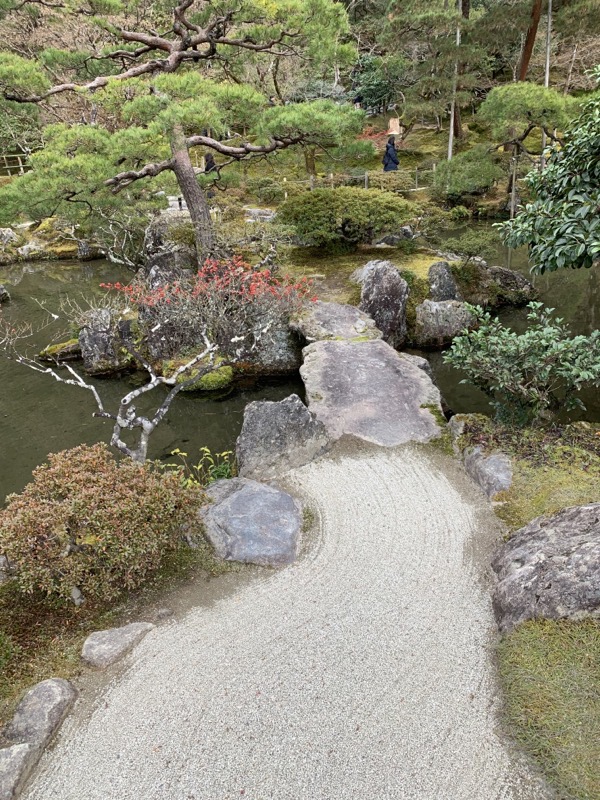
Seems legit. Supreme leader’s fancy garden. It was lovely and relaxing, even full of tourists. This isn’t a true Zen garden, being designed for aesthetic beauty, but when viewed through that lens, it’s definitely a star in my book.
It was so relaxing that he retired here, during the Onin war, enjoying the gardens while Kyoto burnt to the ground. Politicians never change, I guess.
Oh, the Silver Pavilion? It’s not actually silver, nor ever was.
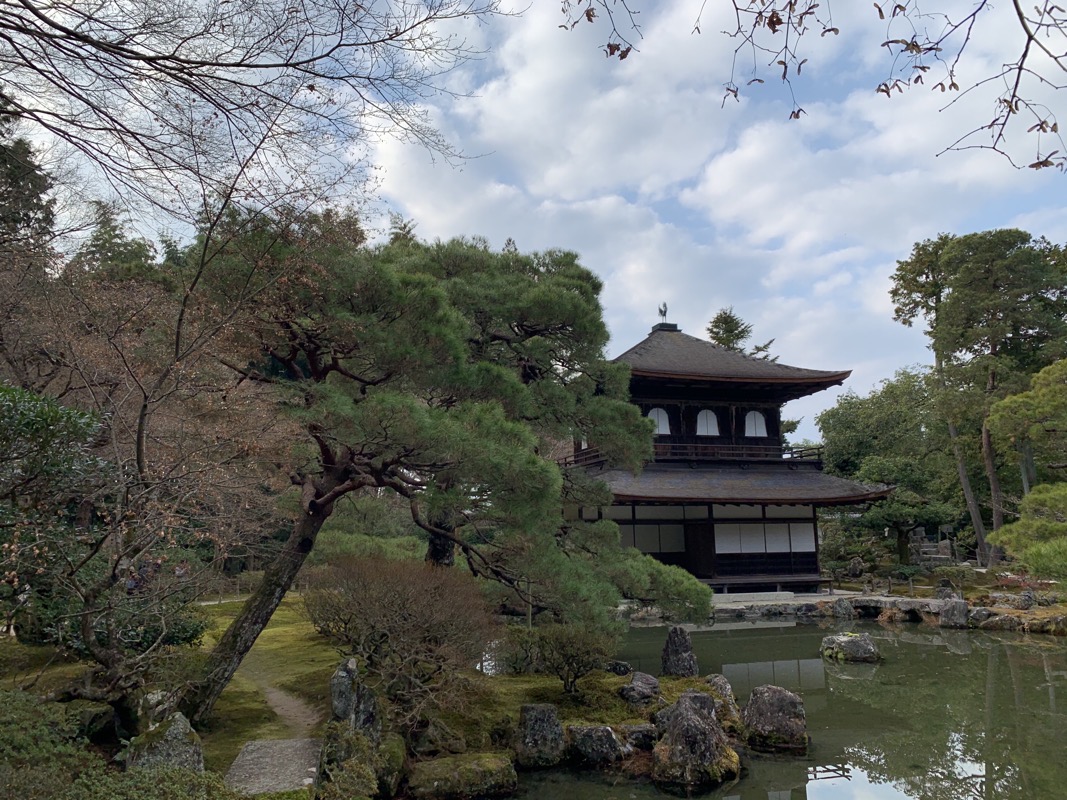
It was intended to be, with a plan to cover it in silver foil. That didn’t happen due to the civil war, so it was retconn’d to refer to the silver moonlight reflecting off the pond against the black lacquer walls.
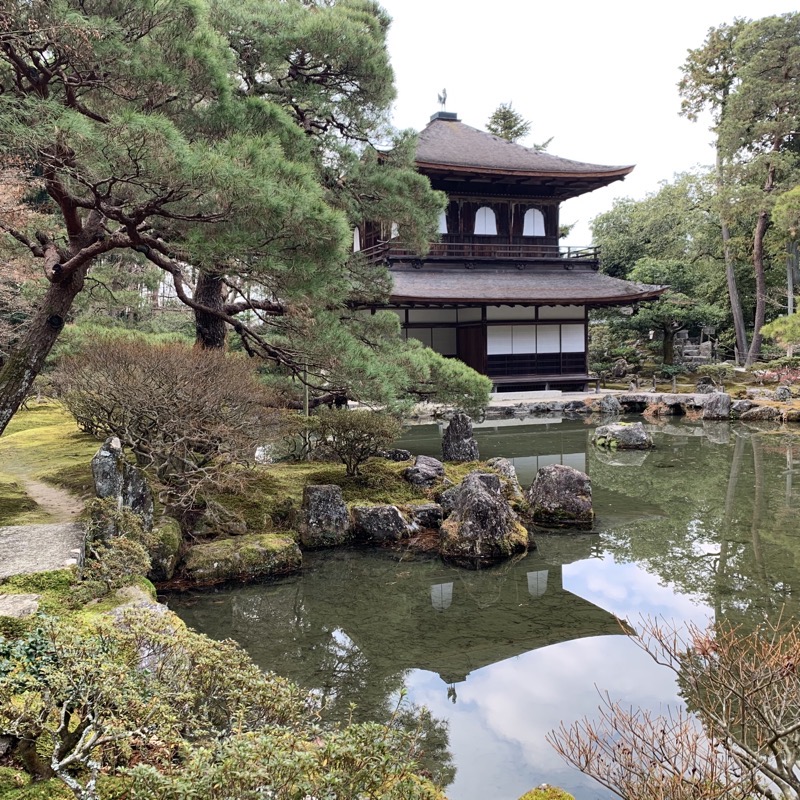
They’ve decided to let the pavilion itself age gracefully, as part of a respect for wabi-sabi, the impermanence and imperfection of things.
The garden ninja in his navy blue outfit. You’ll never see his face, but you’ll never forget his work.
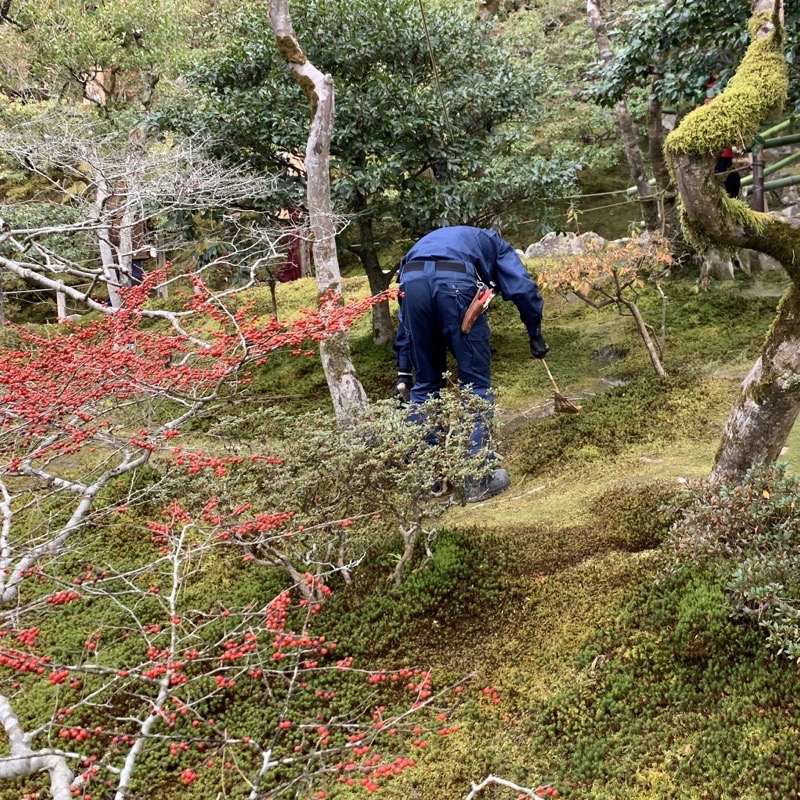
They had a little visual aid on how the roof was built, with every Japanese Cypress shingle being about 30cm long, with 27cm of that being overlapped by the next shingle. All held together with bamboo nails. Designed to last!
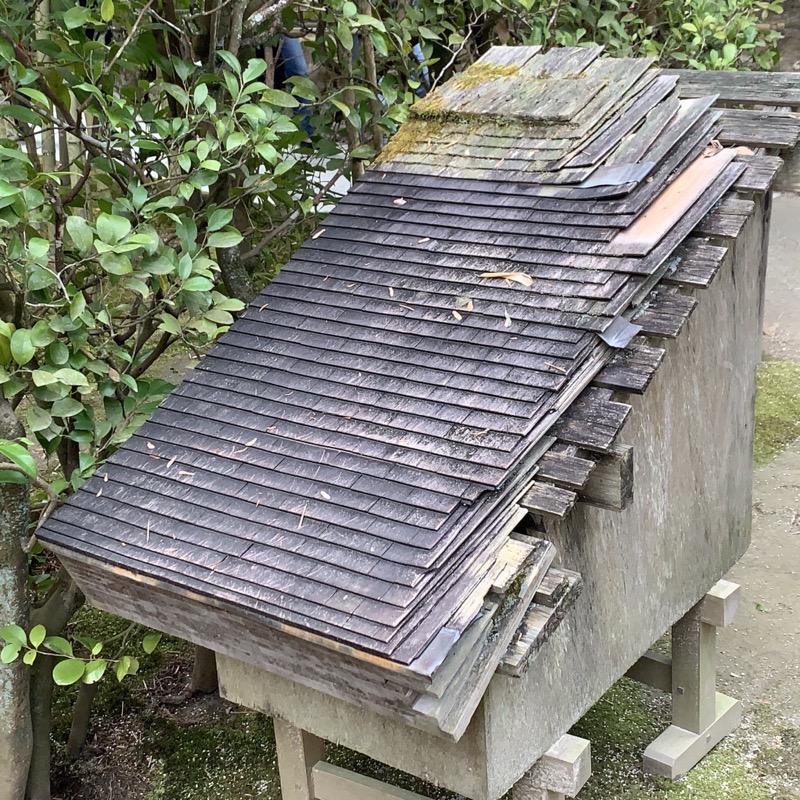
The view from the top of the garden ascent was lovely.
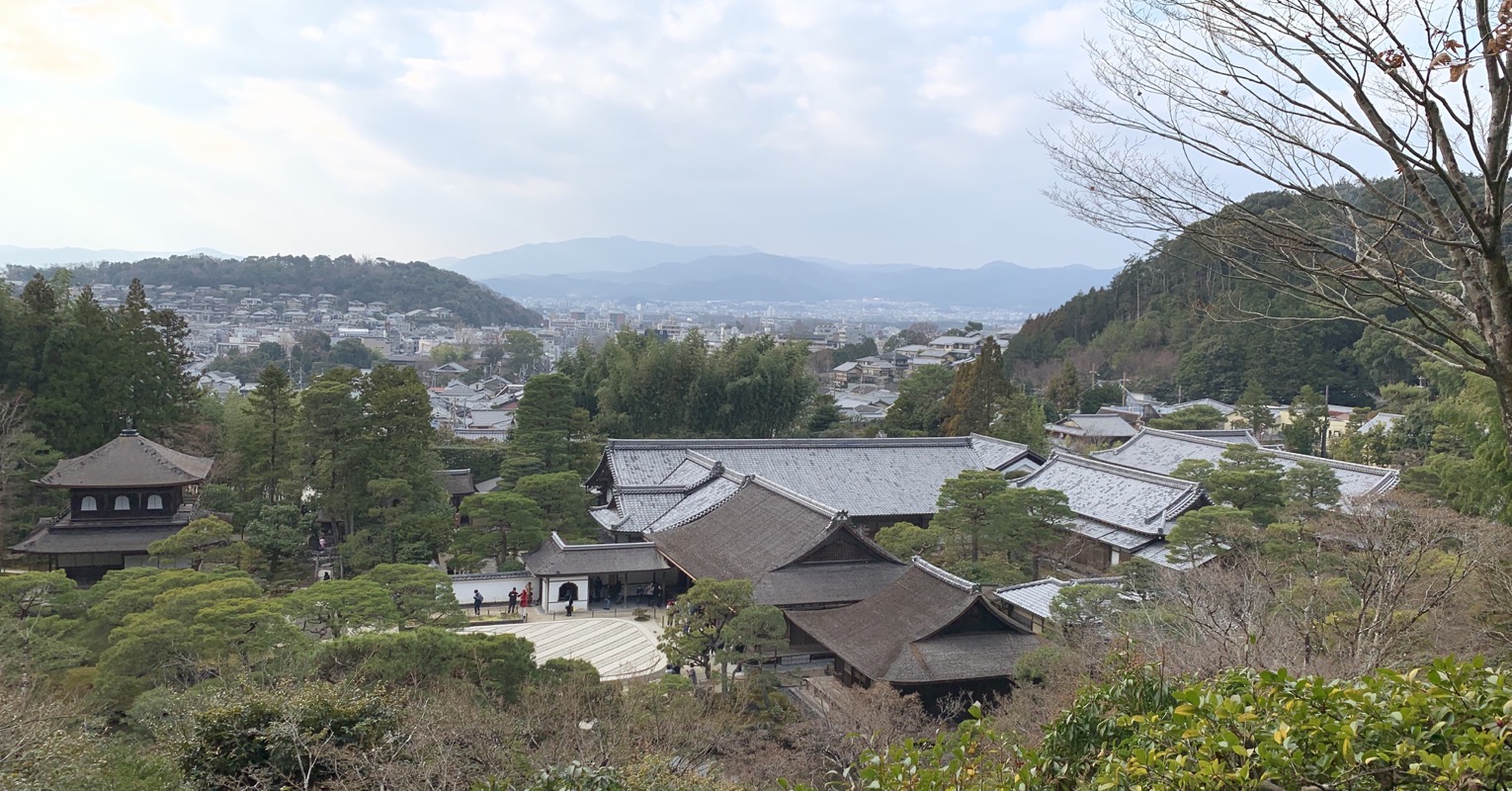
I like stairs. They take you places.
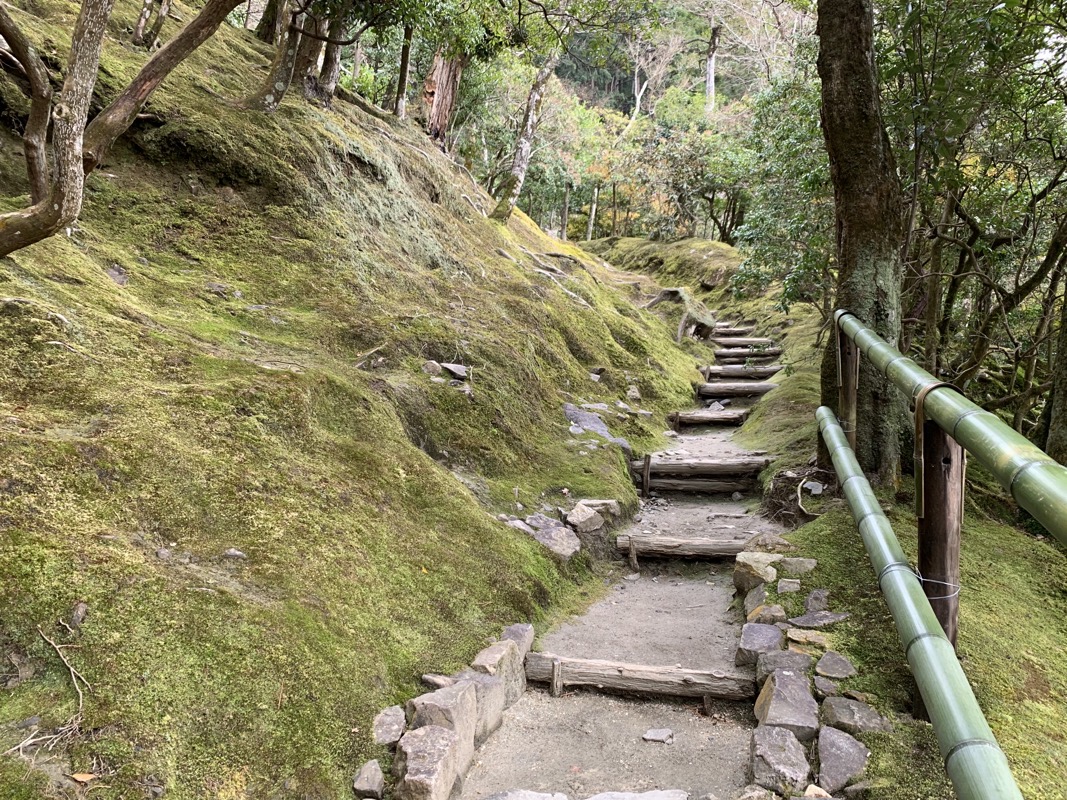
As we wandered to the Philosopher’s Path (a nice place to view the Sakura, if they were blooming) I noticed this inventive gate design. Since there’s no room to allow it to slide (the right hand end was the neighbour’s fence) it lifted up and over the top of the car that was leaving. Similar to garage doors in Australia, once I’d thought about it, without all the overhead of actually having the “garage” bit. :)
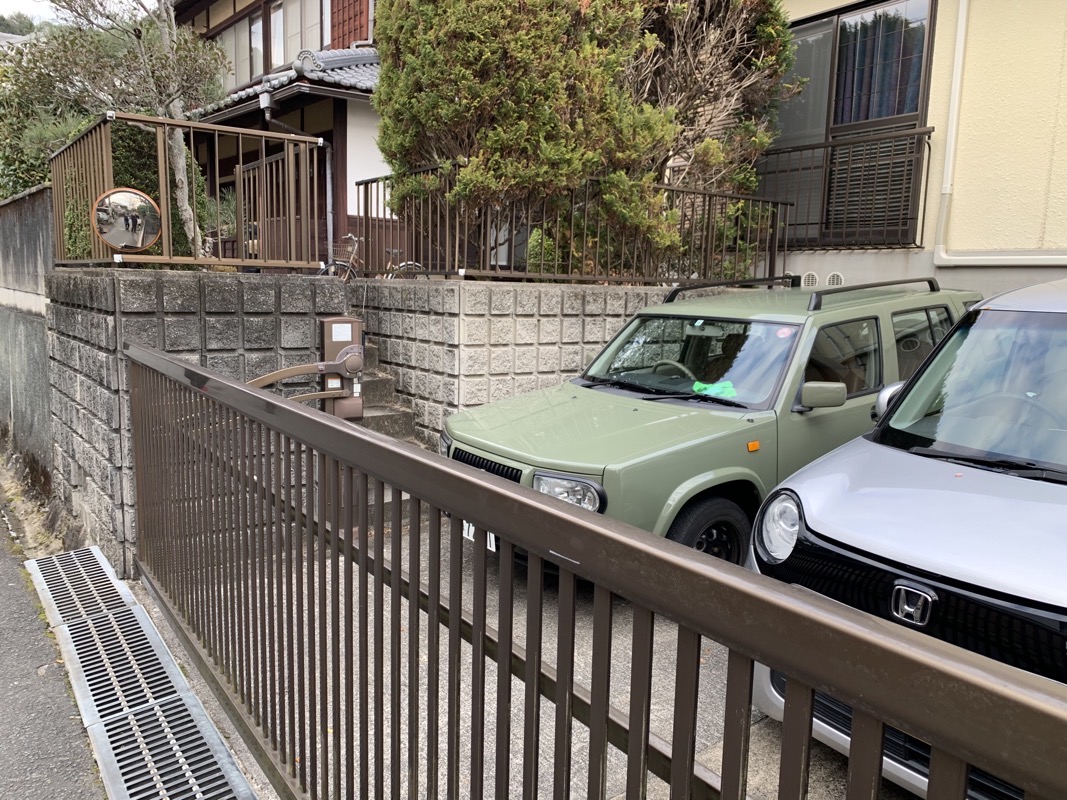
Since we were in the area we visited the Kyoto Imperial Palace, all closed up, but an impressively large structure to wander around.
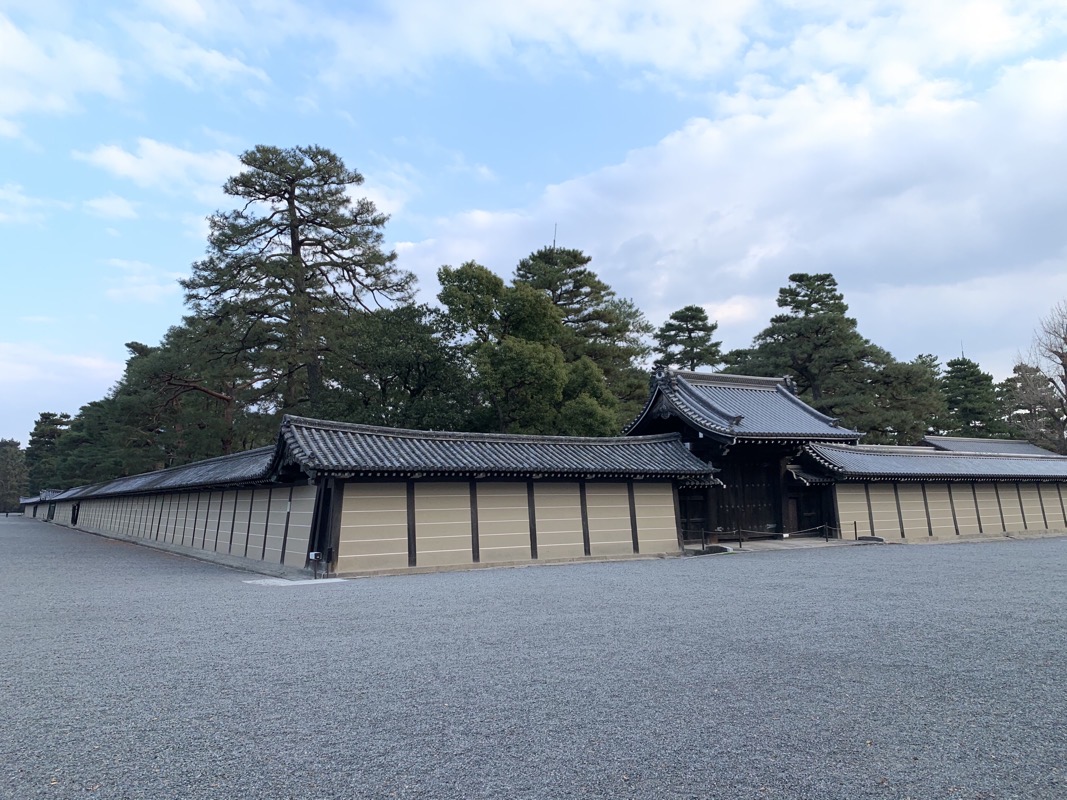
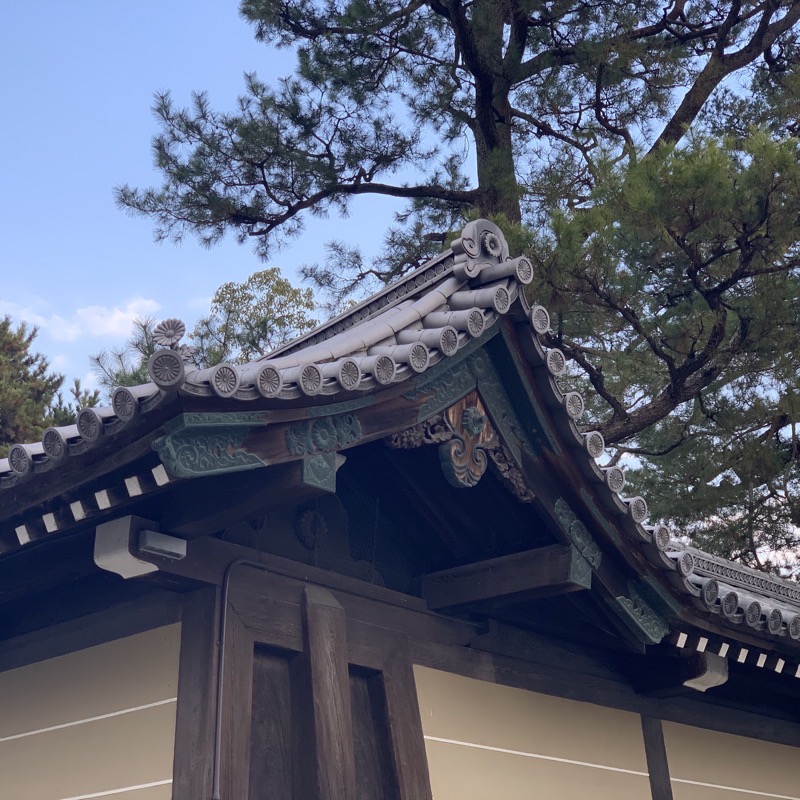
The imperial palace grounds is… very repetitive from the outside. Every so often the walls would either have a small human-sized portal with incredibly sturdy gates, or a slightly larger “guard house” like this.
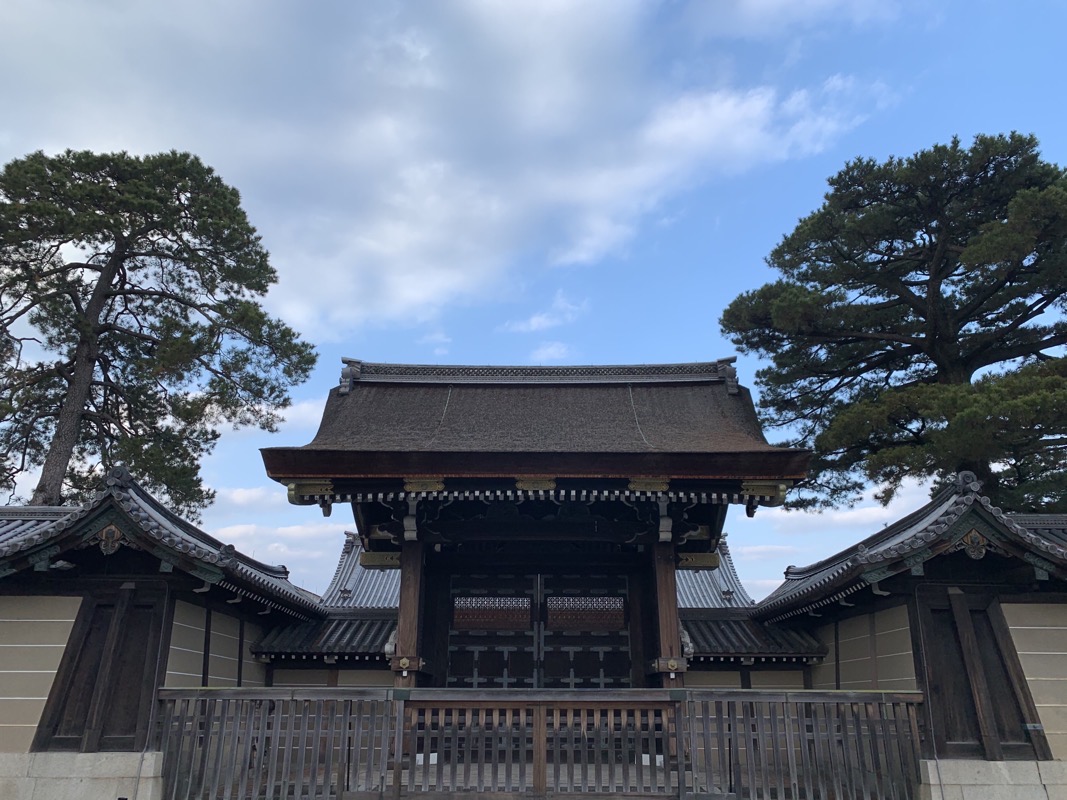
If I’m in town when it’s open again I’ll have to try and visit, but it was a nice walk through the gardens in the meantime.
On the way home, we saw our first petrol station… yeah, I know it’s fairly mundane, but it’s interesting to see how people do things. In Iceland, most of them are entirely automated, to avoid having to spend more time going to the shops and humans on managing them. Here, it seems to be … I don’t even. Maybe they drop down when the station is open? I could barely reach them at full extension, and I’m twice the height of most of the locals.
